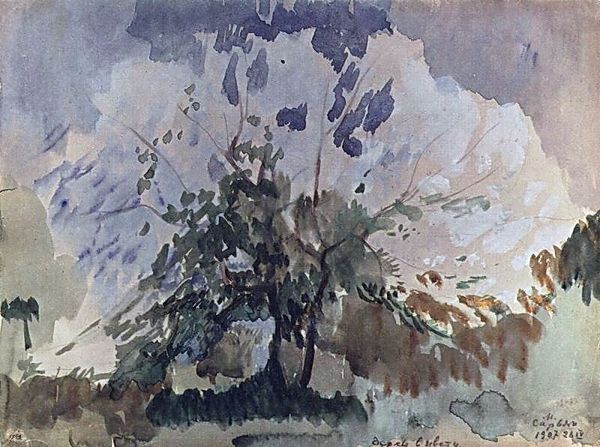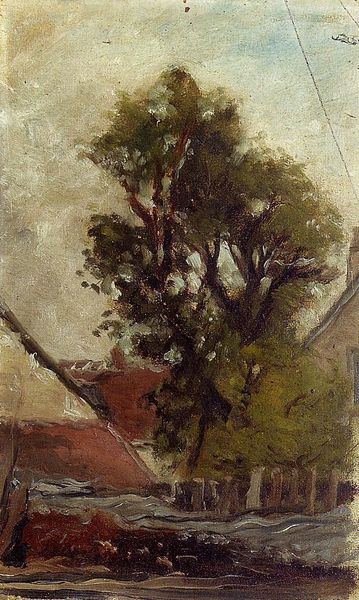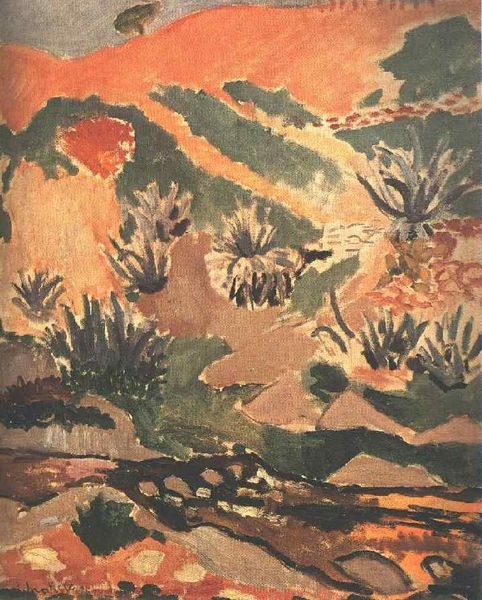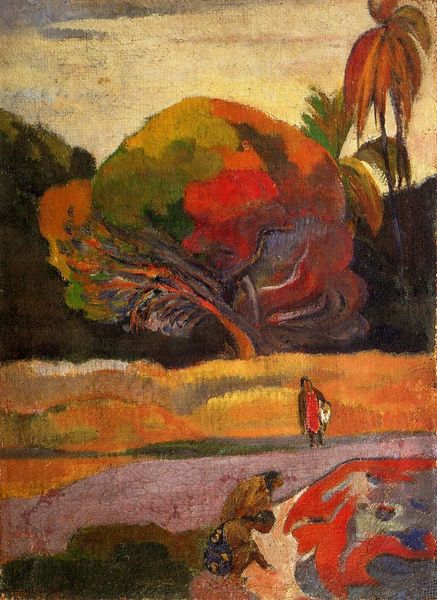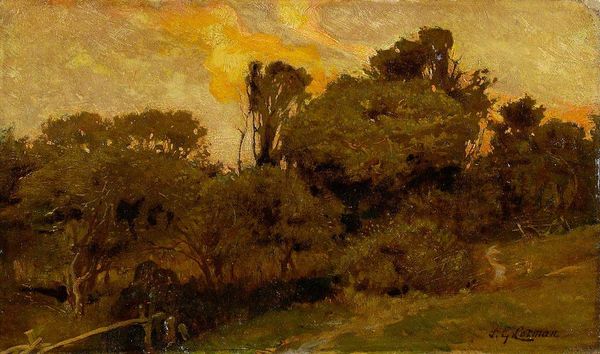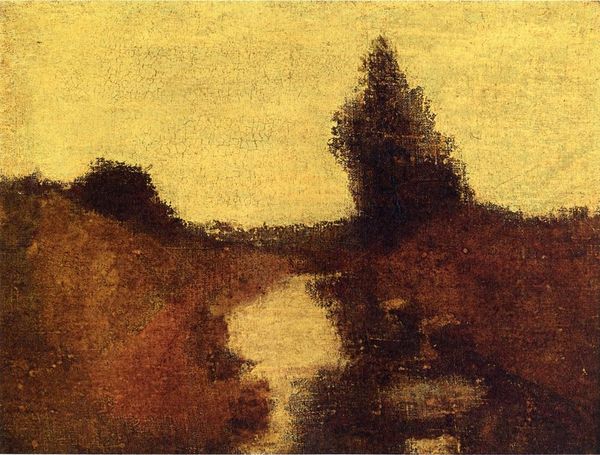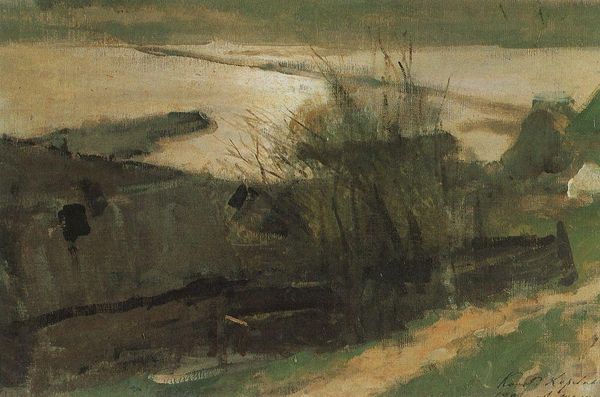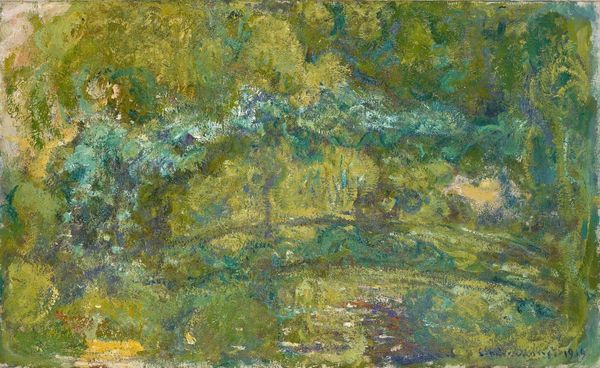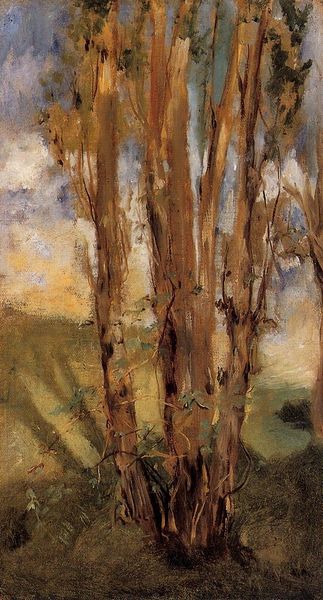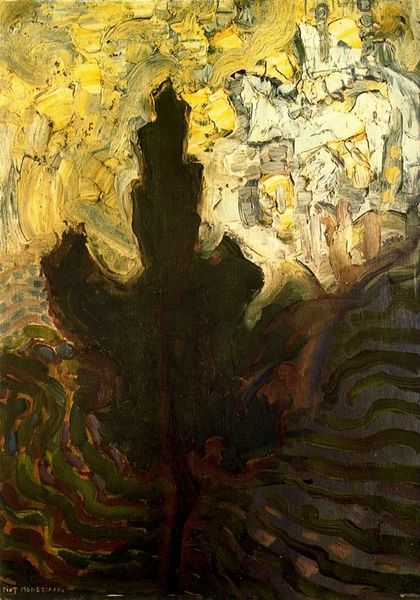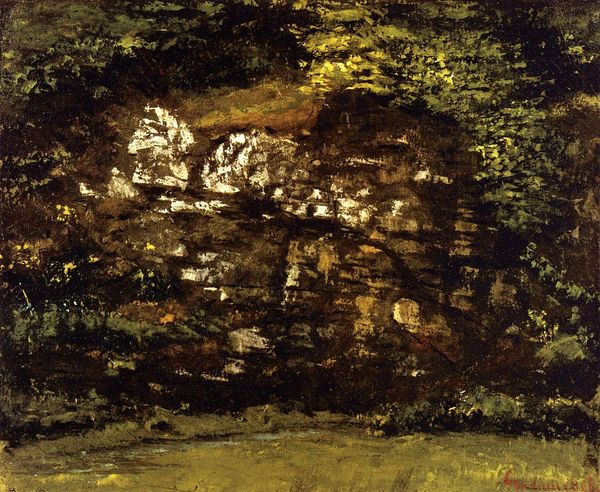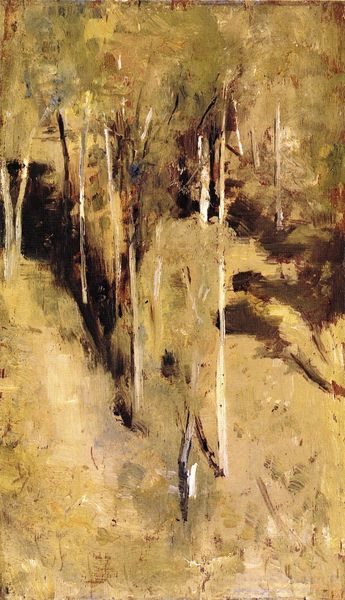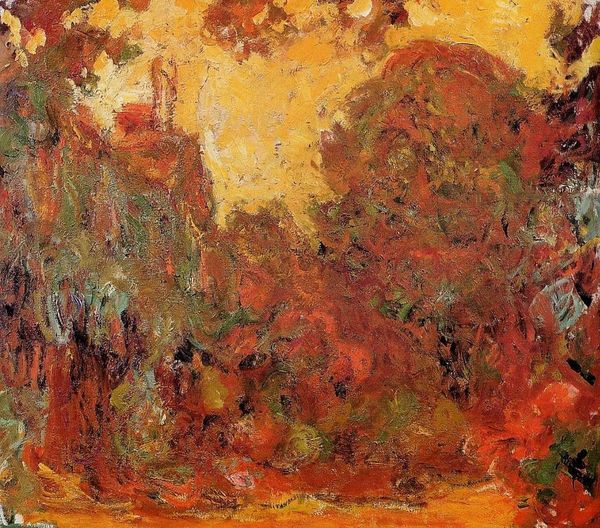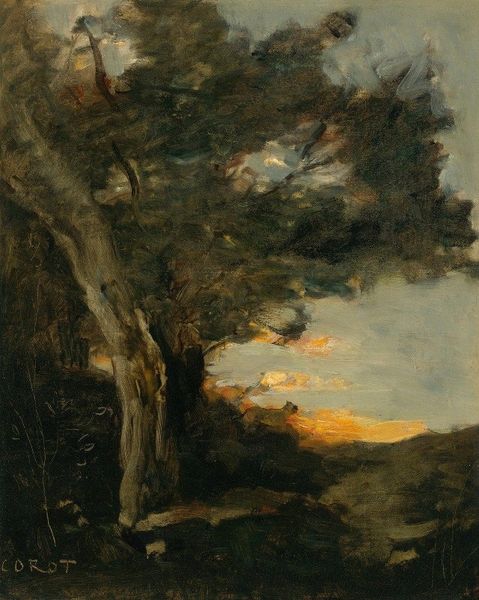
Copyright: Public domain
Curator: So, this is "The Road to the Farm of Saint-Simeon," painted by Claude Monet in 1864. It's a stunning example of his early plein-air work. Editor: Immediately, I'm struck by the golden light. It bathes everything in a warm, almost nostalgic glow. What mood do you think Monet was trying to capture here? Curator: I think it’s about capturing a feeling, a moment, rather than strict realism. It’s that fleeting sensation of sunlight on a path, the shadows of the trees. I can almost feel the breeze and smell the earthy tones. You see this in the brushstrokes, loose and quick. Editor: Right, there's a distinct blurring of boundaries here. And while the colours evoke that romantic era fondness for natural life, his rendering of that world seems so unconcerned with any conventional ideas of "beauty." Where does that sit historically? Curator: Well, you see, it precedes the core impressionistic style he later becomes known for, but it lays the groundwork. It's a departure from the idealized landscapes of the time. He's presenting nature as he experiences it, unedited. Editor: It’s fascinating to consider what an early disruption he stages. The way the road leads your eye but also remains partially obscured suggests both a sense of adventure but also perhaps of hidden, almost forgotten histories residing in that very earth. Curator: Hidden, almost like buried potential perhaps? What really speaks to me is its utter simplicity. Just a road, some trees, a building in the background, all lit by this incredible golden light. And he does it with such confidence. I can imagine him, there in the field, capturing what his soul beholds. Editor: That evokes some questions regarding the cultural context, what kind of a viewer did he anticipate? Where does this idealized golden view depart from what those historically dispossessed, or marginalized might recognize about landscape and place? Curator: Well it also comes down to seeing, experiencing and capturing it. And that’s what art should do. It can spark a conversation; provoke, stir some memories buried in our depths. Editor: Yes, prompting questions of what we see and how that viewing is itself steeped in assumptions... I’m always curious to see what those golden, yet partially obscured paths actually represent!
Comments
No comments
Be the first to comment and join the conversation on the ultimate creative platform.
